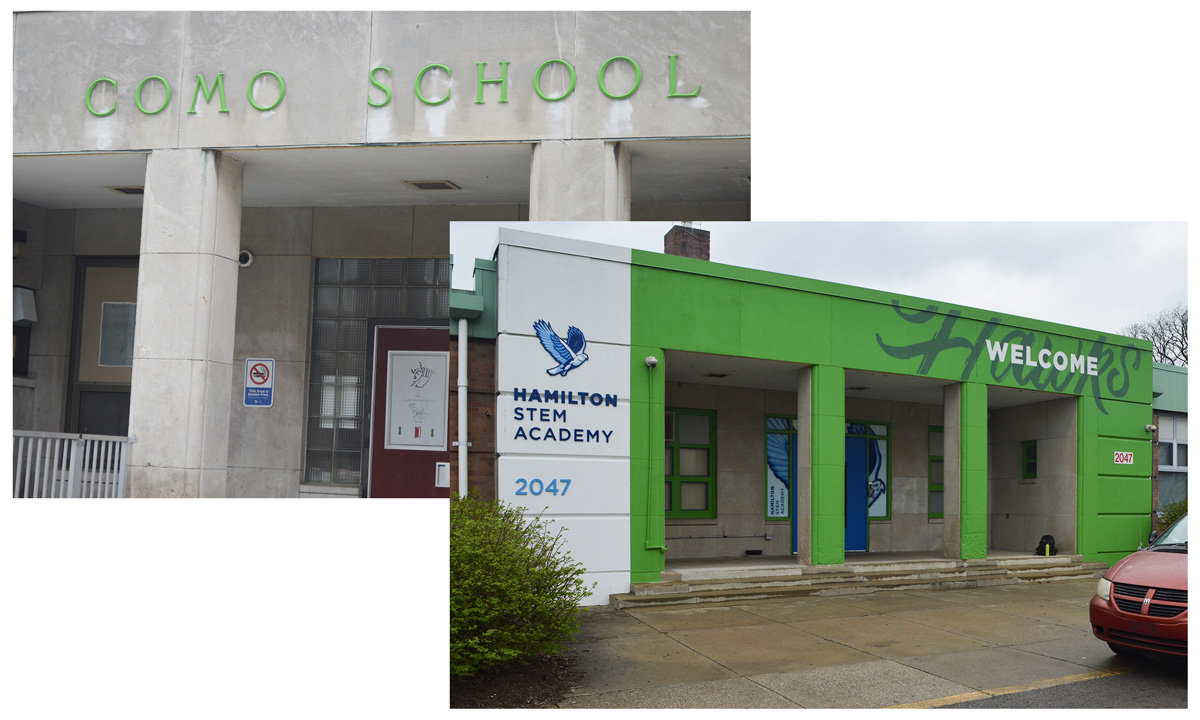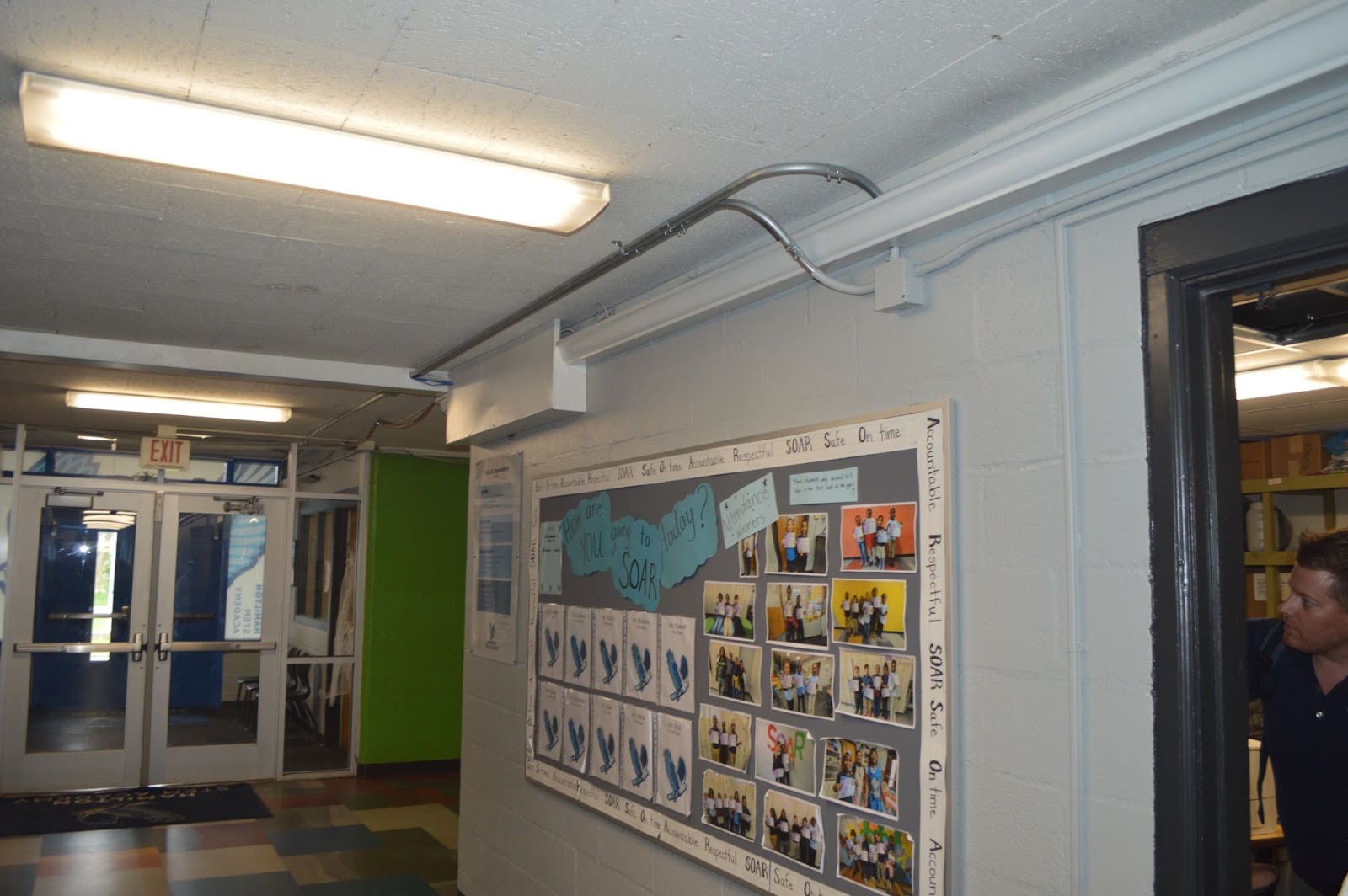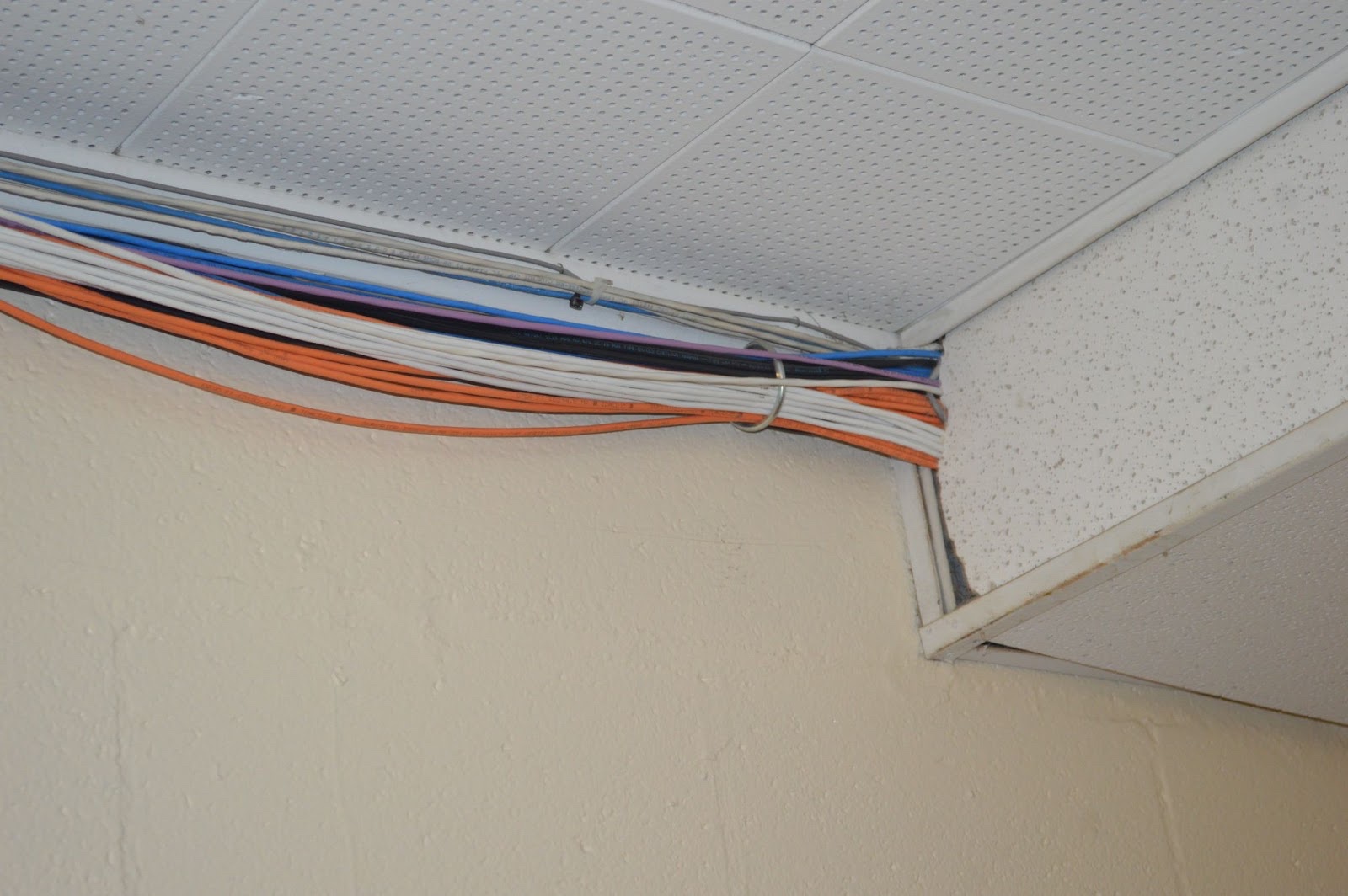Fewer Students, Crumbling Buildings: Columbus Looks to Shut Schools Again
Ohio district has tried to downsize, and failed, twice since 2016. But with 113 schools and just 45,000 students, officials have tough choices to make

Get stories like this delivered straight to your inbox. Sign up for The 74 Newsletter
Correction appended May 31
COLUMBUS, OHIO –– The dire problems facing Columbus City Schools can be illustrated by comparing two buildings: Como Elementary School and Hamilton STEM Academy. Built as identical schools in 1954, they sit less than 2 miles apart, about 4 miles north of downtown.
Como has never undergone a significant renovation. Original floor tiles that an official said contain asbestos still cover a majority of the school, many of its plexiglass windows are no longer translucent and wires snake through the hallways, crudely affixed to the top of cinder-block walls.
While the building has been retrofitted with air conditioning and a new playground, “We can’t do everything,” admits T. Alex Trevino, the district’s director of capital improvements. In addition to its obvious physical shortcomings, the school, with a capacity of 400 students, has only 243.
Meanwhile, a $3.5 million renovation last year has transformed Hamilton’s 47,000-square-foot building, adding flooring that cuts down on noise, new windows and furniture, and walls full of cubbies with doors that make classrooms look neater. Freshly painted hallways are dotted with inspirational sayings. “The kids are excited about the building. It’s changed the school culture,” says principal Christopher Brady. Still, Hamilton is only two-thirds occupied, with just under 400 students in a building with a capacity of 575.
Six schools, including Hamilton, have undergone extensive renovations, with two more planned this summer. But in a district with 113 schools — most of them built before 1975 — the buildings are deteriorating faster than the city can fix them. The district spends some $544,000 on facilities and maintenance for each school every year, $86,000 more than the national average.

Like nearly every urban school district in the country, Columbus has significantly fewer students than it did just six years ago. At its peak in the 1970s, the district educated 110,000 students. By 2017, that figure had shrunk to 50,000. Today, the district has an enrollment of about 45,400.
Some of those students transferred to charter or private schools. An expansion of a state program has let more families use public dollars to pay for tuition. While 26,400 people applied for vouchers last school year, that number skyrocketed to 91,100 in the current school year.
At the same time, the district’s schools were rated the worst in central Ohio. Columbus’s overall rating was a 2 on a scale of 1 to 5 stars, ranking it last among 49 districts in Franklin County.
It’s clear that Columbus City Schools is facing challenges that defy easy solutions. But the course of action officials have settled on — closing schools and redrawing attendance boundaries — has been tried twice before, and failed.
Earlier this year — after voters approved a $100 million levy to fend off teacher layoffs and fund infrastructure improvements and renovations as federal COVID funds run out — the district hired a consultant for $500,000 to assess its buildings. It also created a 22-person task force to consider which schools to shutter.
But there’s no guarantee this solution will work. Closing schools is the least popular action a district can take, and this marks the third time since 2016 that Columbus has tried to overhaul its operations. Both previous efforts were stymied, and a list of 20 possible school closures has already generated criticism from residents and union members.
“I’ve been on a school closing committee,” says Douglas Harris, the Schlieder Foundation Chair in Public Education at Tulane University. “Sometimes it can be in the best interest of the district, but it’s the last thing anybody ever wants to do.”
No one knows the reality of the situation better than Jim Negron. In 2018, he led the committee that proposed closing schools and redrawing attendance zones — a plan that was rejected by the Board of Education. The president of CK Construction is co-chairing this year’s task force as well, and he remains optimistic these decisions will set the district up for success for the next 20 years.

“This is really important work. There’s something special happening in Columbus,” he says.
There is a reason for Negron’s optimism. Columbus is the fastest-growing city in the country, according to a new study by the Bank of America Institute, and more people are likely coming. Intel is planning a $20 billion manufacturing plant in New Albany, about 15 miles from downtown. Honda and LG Energy Solution are teaming up to create a plant about 45 minutes southwest of the city to manufacture batteries for electric vehicles. New zoning rules will allow about 80,000 housing units to be built in Columbus.
All this makes some, including teachers union president John Coneglio, question why the district isn’t looking to spruce up more of its schools instead of closing them. “We’re dismantling schools without a plan to grow the district,” he says.
He worries that unused buildings might be turned into parochial or charter schools, which would siphon off more students from the district. Already, parents are getting texts from charter schools with offers to help fill out their paperwork, he says. Will the city “leave neighborhoods empty and ripe for charters to take our kids?” he asks.
Coneglio, who was originally on the task force but resigned, says the district’s efforts have a “predetermined outcome, and their goal is to guide you to that outcome.”
When the task force revealed at a May 7 meeting the 20 schools that might be closed, so many union officials and city residents attended that the district had to create an overflow room so everyone could watch the proceedings, according to a story in The Columbus Dispatch.
“There’s a lot more work to be done here,” board President Christina Vera said at the meeting. “This is not going to be an easy lift.”
Afterward, Superintendent Angela Chapman tried to head off criticism when she answered a question about upset parents by saying: “I would say … to take a deep breath. These are initial recommendations that have been submitted to begin the conversation about where we go from here. … These are not the final recommendations.”
The task force is slated to send a final list to the seven-member Board of Education in June. Any changes would take effect in fall 2025.
Even before the task force made its initial recommendations, co-chair Al Edmondson admitted that informal lobbying had begun. “People call and say, ‘Don’t close my school down. My mom went there, I went there.’ But these buildings are old. Something needs to happen.”
Harris says he has found that closing schools works best when a district considers the effect on the community and not just how much money can be saved. He urges leaders to “find ways to keep teams together,” because bonds among families, teachers and principals are hard to re-create.
A study conducted by Harris and two colleagues found that closing the lowest-performing elementary schools can improve student achievement, but not if children are placed in worse schools.
While Harris admits the disruption of changing schools can impair learning, this is offset by transferring to a better school, he says. And future cohorts of students, such as kindergartners, would attend the better school without disruption.
But this “is contingent on closing the lowest-performing schools … which doesn’t often happen,” he adds.
Columbus’s board policy calls for the task force to consider 14 factors in deciding which schools to close; the first on that list is teaching and curriculum. Other items include the age and condition of the building, the number of students who will need to be relocated and enrollment trends. Task force members are also to make sure closures don’t disproportionately affect one section of the city.
Before the meeting, Negron said he had already heard from a lot of residents, and he expects — and hopes — to hear from more before the final recommendation next month. “There’s a lot of passion around the task at hand. That’s not unexpected. I expect to hear more, and I welcome that.”
Correction: Students from Columbus City Schools have transferred to both charter and private schools.
Get stories like these delivered straight to your inbox. Sign up for The 74 Newsletter

;)